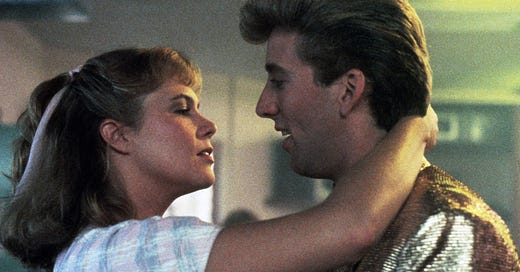Peggy Sue Got Married (1986)
This comic fantasy about a forty-something woman who travels back to her senior year after attending her high school reunion offered a circular notion of time, relationships, and generational ties.

Please support my work by becoming a free or a paid subscriber to the newsletter. Paid subscribers can access my full archive of posts at any time, and are vital to me being able to continue producing and expanding this newsletter.
This post is part of the ‘Rewound’ series of analyses of objects or episodes from cultural and political history.
Spoiler alert: This analysis of the film Peggy Sue Got Married and its themes reveals plot details for the purpose of enhancing that analysis.
Keep reading with a 7-day free trial
Subscribe to The Academic Bubble to keep reading this post and get 7 days of free access to the full post archives.



